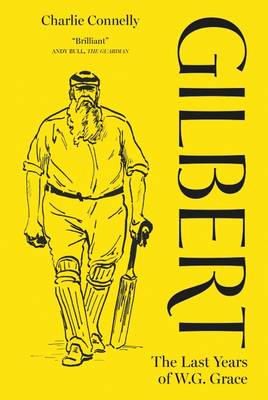Gilbert: The Last Years of W. G. Grace

There are few more instantly recognisable figures, from any era, from any walk of life, than W.G. Grace. With his enormous height, beer-barrel girth and immense beard he was – and remains – a caricaturist’s dream. Too much so, in many ways. Arguably the finest and most influential cricketer who ever lived and one of the first true celebrities Grace became a persona rather than a person, racketing up unprecedented amounts of runs and wickets while slowly vanishing behind an increasing swirl of myth and apocrypha.
Gilbert is the first examination of Grace to dig beneath the surface, blow the fog of fable and explore the man himself, the human being, and ask what he might have thought and felt. Who, in effect, was W.G. Grace?
In the year that marks the centenary of Grace’s death, Charlie Connelly charts the final years of his life, from his fiftieth birthday celebrations in 1898 to his death at the age of 67 in 1915, through the eyes of Grace himself. In an unusual take on this most eminent Victorian and extraordinary pioneering sportsman, Connelly draws on contemporary documents and accounts to imagine Grace’s progress through his final years.
It was no quiet dotage either: he played cricket until a year before his death, captained the England curling team and remained an enthusiastic golfer and shooter to the end. He also dealt with bereavement, ill health and was greatly troubled by the gathering clouds of war. He was, in short, a human being as much as a sporting colossus.
Combining facts and imagination, Gilbert is an affectionate and beautifully written account of the Champion’s later life that comes closer than ever before to giving a sense of the real W.G. Grace behind the mythology; the perennially childlike soul saddled with the weight of genius.
To the public he was The Doctor, The Champion and W.G., but to those who knew him best he was simply Gilbert. This is a book about Gilbert.
Praise for Gilbert: The Last Years of W. G. Grace:
“WG’s character springs out of Gilbert, Charlie Connelly’s delightful account of the doctor’s later years… A series of beautiful snapshots.” Literary Review
“Charlie Connelly does the memory a service by humanizing a justly famous Victorian celebrity.” Times Literary Supplement